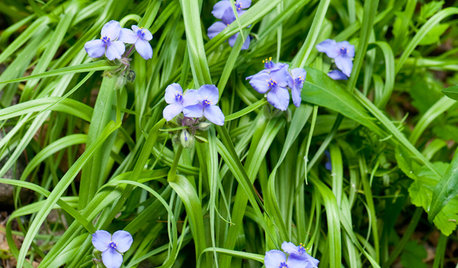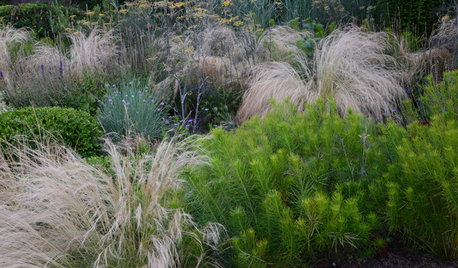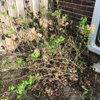Overwintering phlox in clay plus dogs destroying garden
Karolina11
11 years ago
Related Stories

GARDENING GUIDESHow to Stop Worrying and Start Loving Clay Soil
Clay has many more benefits than you might imagine
Full Story
PETS6 Ways to Help Your Dog and Landscape Play Nicely Together
Keep your prized plantings intact and your dog happy too, with this wisdom from an expert gardener and dog guardian
Full Story
GARDENING GUIDESGreat Design Plant: Tradescantia Ohiensis Adds Shades of Blue
This reliable, adaptable U.S. native provides spider-like foliage and clusters of blue to purple flowers in Eastern gardens each spring
Full Story
GARDENING GUIDESAttract Hummingbirds and Bees With These Beautiful Summer Flowers
Roll out a welcome mat for pollinators to keep your landscape in balance and thriving
Full Story
GARDENING FOR BUTTERFLIES3 Ways Native Plants Make Gardening So Much Better
You probably know about the lower maintenance. But native plants' other benefits go far beyond a little less watering and weeding
Full Story
GARDENING GUIDESLessons in the Rewards of Selfless Gardening
Let go of gardening for your own vision and watch the garden’s own true vision come forth
Full Story
GARDENING FOR BUTTERFLIESButterfly Gardening: Delight the Eyes With Living Sculptures
Surprise and thrill with a garden that attracts magical winged creatures, bringing color, movement and life
Full Story
FRONT YARD IDEAS10 Ideas for a Front-Yard Edible Garden Your Neighbors Will Love
Choosing attractive, well-mannered plants and sharing the bounty will go a long way toward keeping the peace
Full Story
WINTER GARDENINGPruning Secrets for Exquisite Roses
Encourage gorgeous blooms year after year with this time-tested advice on how to prune your rosebush in winter for health and shape
Full Story
GARDENING GUIDES4 Ways to Break the Rules in Your Garden
For a more creative landscape design, take a different approach to planting
Full StoryMore Discussions









Karolina11Original Author
mad_gallica (z5 Eastern NY)
Related Professionals
Tempe Landscape Architects & Landscape Designers · Ballenger Creek Landscape Architects & Landscape Designers · Mooresville Landscape Contractors · Edmond Landscape Contractors · Estelle Landscape Contractors · Fairview Landscape Contractors · Gurnee Landscape Contractors · Huntley Landscape Contractors · Kettering Landscape Contractors · Lake Saint Louis Landscape Contractors · Lancaster Landscape Contractors · Pompton Lakes Landscape Contractors · Raleigh Landscape Contractors · West Chicago Landscape Contractors · Norridge Landscape Contractorsrouge21_gw (CDN Z5b/6a)
mistascott
sunnyborders
rouge21_gw (CDN Z5b/6a)
ken_adrian Adrian MI cold Z5
Karolina11Original Author
mistascott
mistascott
sunnyborders
ken_adrian Adrian MI cold Z5
mad_gallica (z5 Eastern NY)
mistascott
katob Z6ish, NE Pa
gardenfanatic2003
Karolina11Original Author